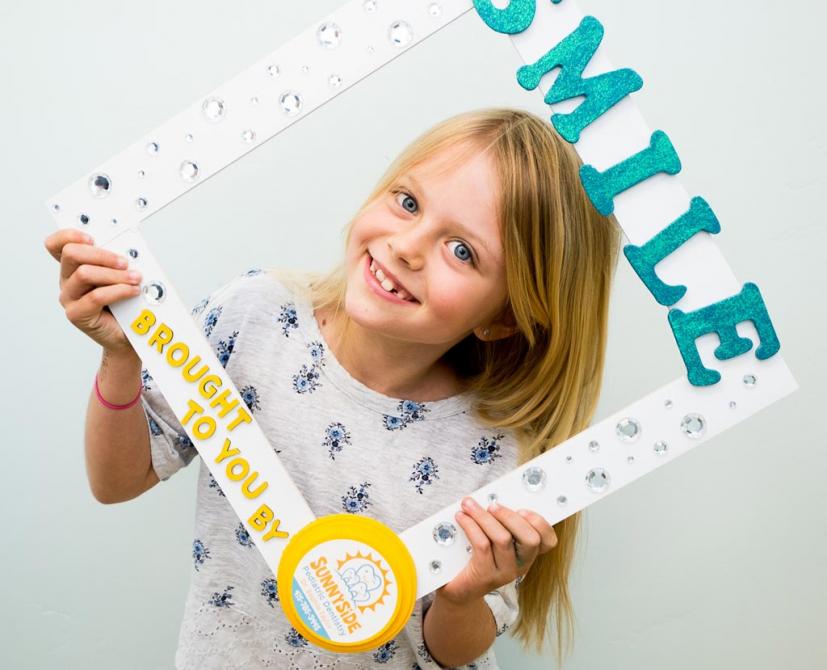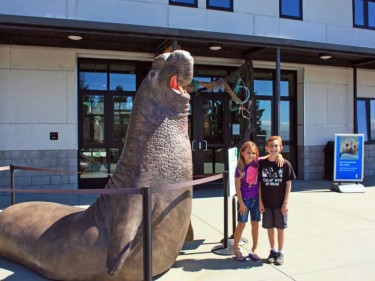3 Things Every Parent Should Know About Their Children’s Teeth

Marin Mommies presents a sponsored article from Dr. Sophie Taylor of Sunnyside Pediatric Dentistry in San Rafael
First Tooth = First Visit
For the best outcomes, find a dental home when your children are young.
 Establishing a dental home as soon as your child starts teething significantly improves his or her long term oral health. If you pair this with routine personalized exams every 3-6 months (depending on your child’s individual needs) the outcomes are even better!
Establishing a dental home as soon as your child starts teething significantly improves his or her long term oral health. If you pair this with routine personalized exams every 3-6 months (depending on your child’s individual needs) the outcomes are even better!
As a pediatric dentist, the most important job that I do is not actually restoring teeth damaged by decay. It’s preventing decay by providing my patients with a stable, long-term support plan that encourages positive preventive oral health habits, and helps them to have the best possible experience with dental care.
How do you find the right dental home? Dentist offices vary in terms of their interpersonal styles and treatment philosophies. Choosing where to establish your child’s dental home is highly individual. Do some research first and even visit a few offices. To help your child develop a positive oral healthcare experience, you should select a provider that you believe will make your child comfortable, encourage them to feel confident, and will establish a relationship of mutual trust and respect. All of these things will lead to having great patient experiences for many years to come.
Never Sleep with Dirty Teeth!
When it comes to your children’s teeth, prevention is the best medicine, and brushing at bedtime is most important.
Dirty teeth can harbor hundred of strains of bacteria. Most are harmless; however, some - like streptococcus mutans - are cariogenic. Cariogenic bacteria consume carbohydrates/sugars and release acids that demineralize (soften) the crystalline enamel layer of our teeth. Over time this results in decay and cavities.
So what can you do? Ensure that your child brushes regularly! Ideally for two-minutes twice a day, but brushing at bedtime is most important. Overnight, all that decomposing food will result in tooth decay, as the bacteria eat both the food left behind and your child’s tooth enamel!
Some children take to brushing easily, while others find it more challenging. But don’t get discouraged! One idea is to make brushing a fun shared activity. I’ve created this YouTube playlist full of great brushtime videos for anyone to use. Remember to have your child brush for a full two minutes. Also, keep in mind that your child will need help brushing until they turn 8 or until your pediatric dentist says they are ready to start on their own.
Even “Healthy” Food Can Cause Decay
The good news is that there are things you can do to fight it!
 Tooth decay is the most common chronic child disease in the US. In fact, 50% of children in the U.S. have decay by the time they turn 5! It’s important to know that even healthy foods contain sugars that can cause decay. Although healthy snacks are better for many reasons, the bacteria on teeth don’t care if the sugars are “healthy/natural” sugars (organic fruit snacks) or high-fructose corn syrup (Snickers).
Tooth decay is the most common chronic child disease in the US. In fact, 50% of children in the U.S. have decay by the time they turn 5! It’s important to know that even healthy foods contain sugars that can cause decay. Although healthy snacks are better for many reasons, the bacteria on teeth don’t care if the sugars are “healthy/natural” sugars (organic fruit snacks) or high-fructose corn syrup (Snickers).
Tooth decay is not just what you eat and drink, it’s also how frequently you eat and drink. Decay occurs when the pH of the environment around the enamel dips below a certain level. So imagine that each time you eat or drink anything other than water you create a change in the pH. This is called an “acid attack.” Decay occurs when the mouth experiences too many acid attacks, and the enamel shell of the teeth literally melts away.
How can you reduce decay? My biggest tip is to help your child maintain a neutral pH by reducing the length and frequency of acid attacks. Five things you can do are:
- Reduce the stickiness of plaque by avoiding dried carbs/sticky sweets. You can get a copy of my snack guide for oral health here.
-
Avoid all day snacking/sipping (unless it’s plain water). This will reduce the length and frequency of acid attacks. Sticking with 3 meals and limiting to 2 snack times a day is best.
-
Drink Water All Day. Water helps to neutralize the oral environment and wash away sugars and food.
-
Wait at least 20-30 minutes after eating or drinking to brush. This lets the acidity of the food or drink subside. Drinking water can shorten this timeframe.
-
Ask your dentist for topical fluoride treatments to strengthen enamel and heal, reverse, or stabilize the early damage that occurs all day, every day.
Remember, it’s not all genetics and soft teeth that dictate oral health. At the end of the day, the most important thing for a healthy smile is prevention, which you can help your child achieve by maintaining proper oral hygiene habits and visiting your dentist regularly.
 Dr. Sophie Taylor is a pediatric dentist in San Rafael, CA and owner of Sunnyside Pediatric Dentistry. When she’s not in the office, she’s having fun outside with her 3-year old son.
Dr. Sophie Taylor is a pediatric dentist in San Rafael, CA and owner of Sunnyside Pediatric Dentistry. When she’s not in the office, she’s having fun outside with her 3-year old son.
Have a question about your kids teeth? You can submit your dental questions directly to Dr. Sophie online through the Sunnyside website.
Related Articles
Today's Events
Sponsor
Promote your business here!





